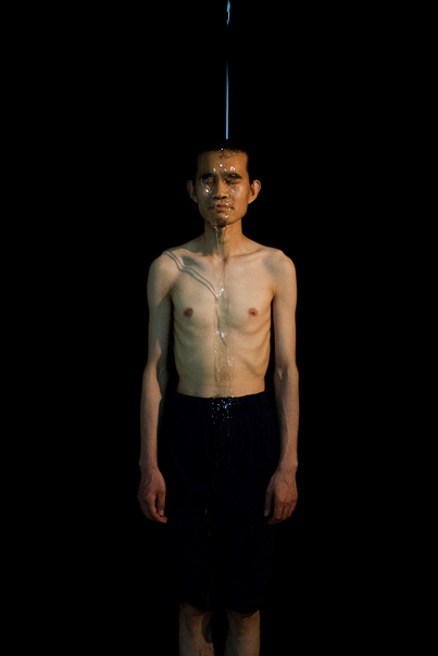 |
Jin Lipeng, an artist and teacher, was born in 1977. He currently lives and works in Chongqing, China. His works focus on ecological crisis and sustainable development through the mediums of installations, performance, and social participation art. He also explores an imaginative future. In addition to personal creation, Jin Looping teaches art and social practice in the New Media Department of Sichuan Fine Arts Institute. He is the head of the "Ecological Art" courses, he has carried out some long-term projects with students through the courses and developed interdisciplinary cooperation on and off-campus. As a researcher, Jin Lipeng also pays close attention to the work in other fields and the creations of other artists engaged in the ecological practice. He has also initiated and organized ecological markets, enzyme workshops, and other related activities.
 |
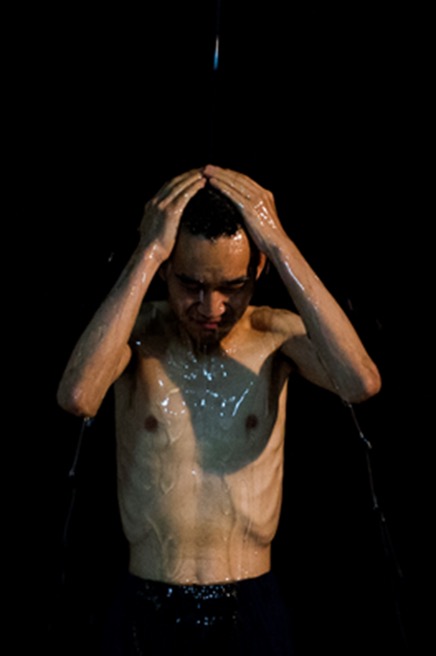 |
|
“Transgenic Anointment” Performance art | Dimensions Art Centre, Chongqing | 2017 |
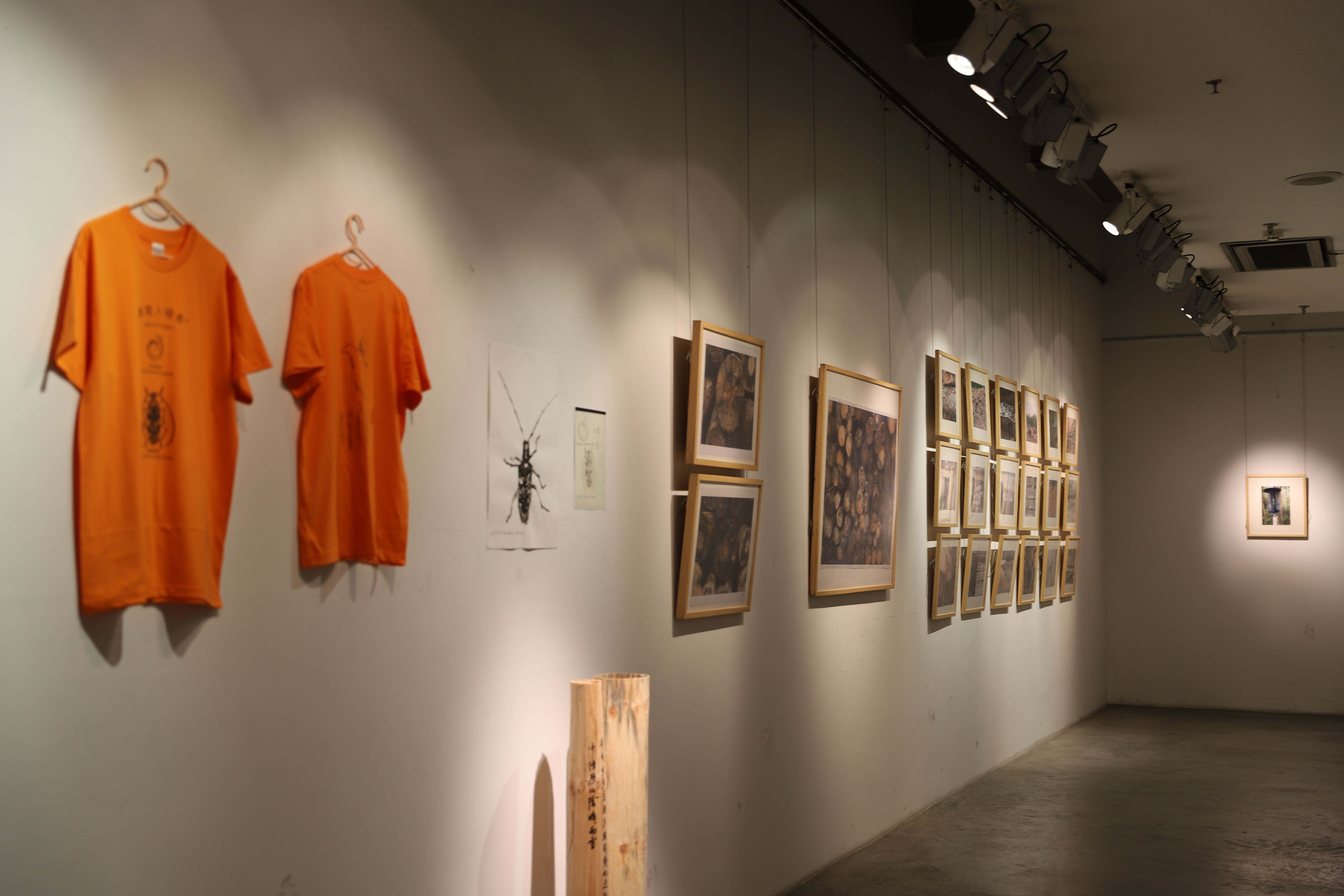 |
|
"Who is the Invader" exhibition |
"Who is the Invader", the residency project of Ningbo Art Museum, combines installations, videos, cyanotype printings, paintings, designs, and workshops to explore the connection between invading organisms and biodiversity, urbanization, and the globalized Ningbo. At the same time, the project explored the relationship between humans and nature from the perspective of "human beings as the largest invasive species".
Ningbo is a world-class port and a busy gateway of international trade. In here, invasive species are not uncommon——poisonous plant seeds and insects are lurking in imported soybeans, wheat, and other bulk crops, pathogens are hidden in fruits and plants brought by tourists, various algae that can cause red tides are mixed in ship’s ballast water, pinewood nematodes are hidden in wooden packaging boxes and have been destroyed 90 million pine trees in our country... The artist visited Ningbo Customs, Agriculture Bureau, State Ocean Administration, Gardening Bureau, Forest Disease Prevention Stations, Forest Farms, Institutes for Drug Control and Urban Administrative Offices, and many other departments to seek dialogue. Teacher Chi Shuyou from the Forest Disease Prevention Station and Teacher Tang Yongjiang from the Simingshan Forest Farm introduced the prevention and control of pinewood nematodes in Ningbo. Teacher Lin Hailun, a plant expert from the Chinese Medicine Inspection Institute, described the pattern of invasive weeds in the city, the absurdity of human weed removal, and the larger invasive power behind–––the expansion of cities. The subject of "Who is the invader?" was directly inspired by Teacher Lin, who revealed that humans' invasion of nature is more worthy of reflection than invasive creatures themselves. Several works in this project are introduced below.
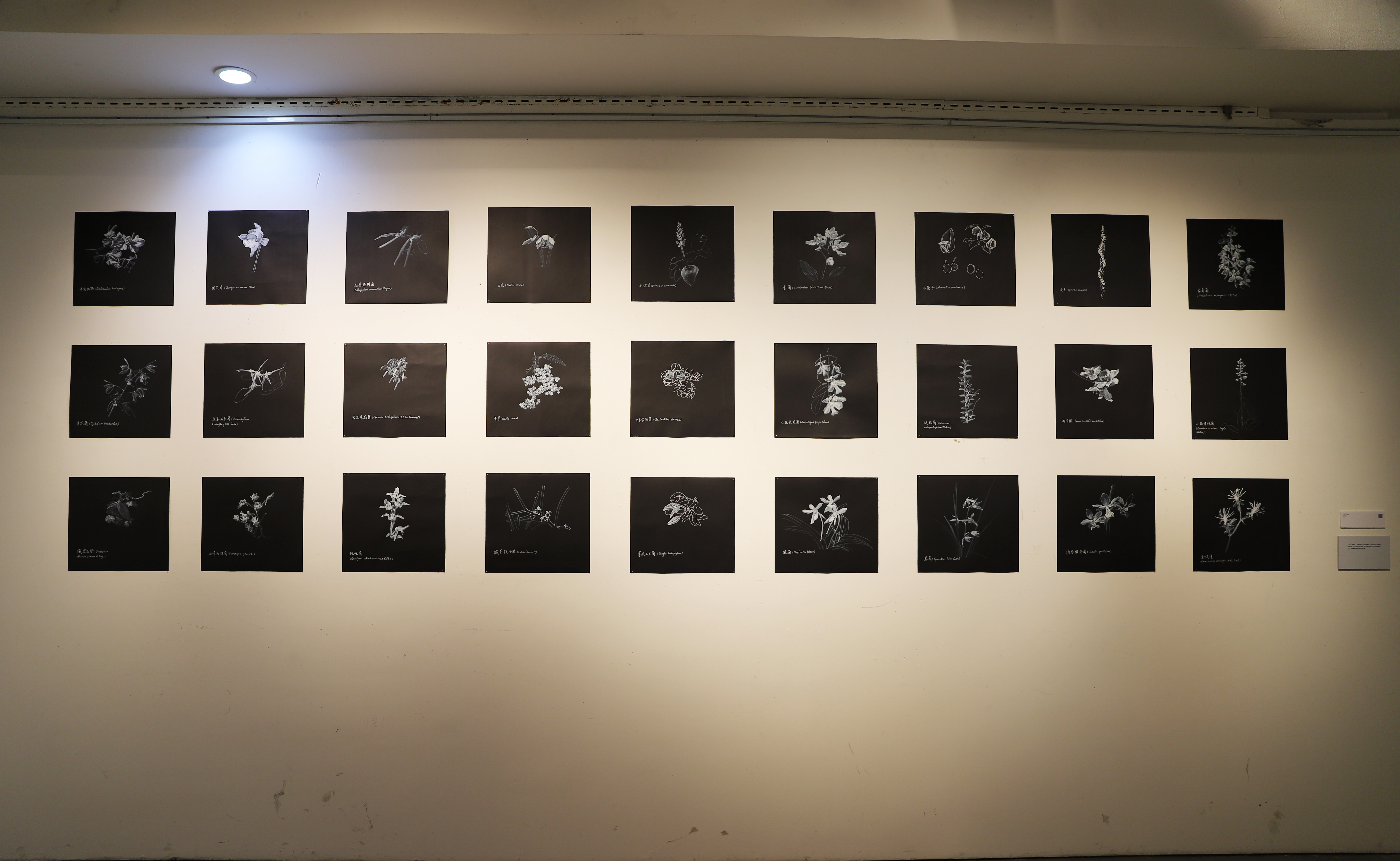 |
|
"Who is the intruder" Installation | Acrylic on black card | 40cm*38cm*27pieces | 2018 |
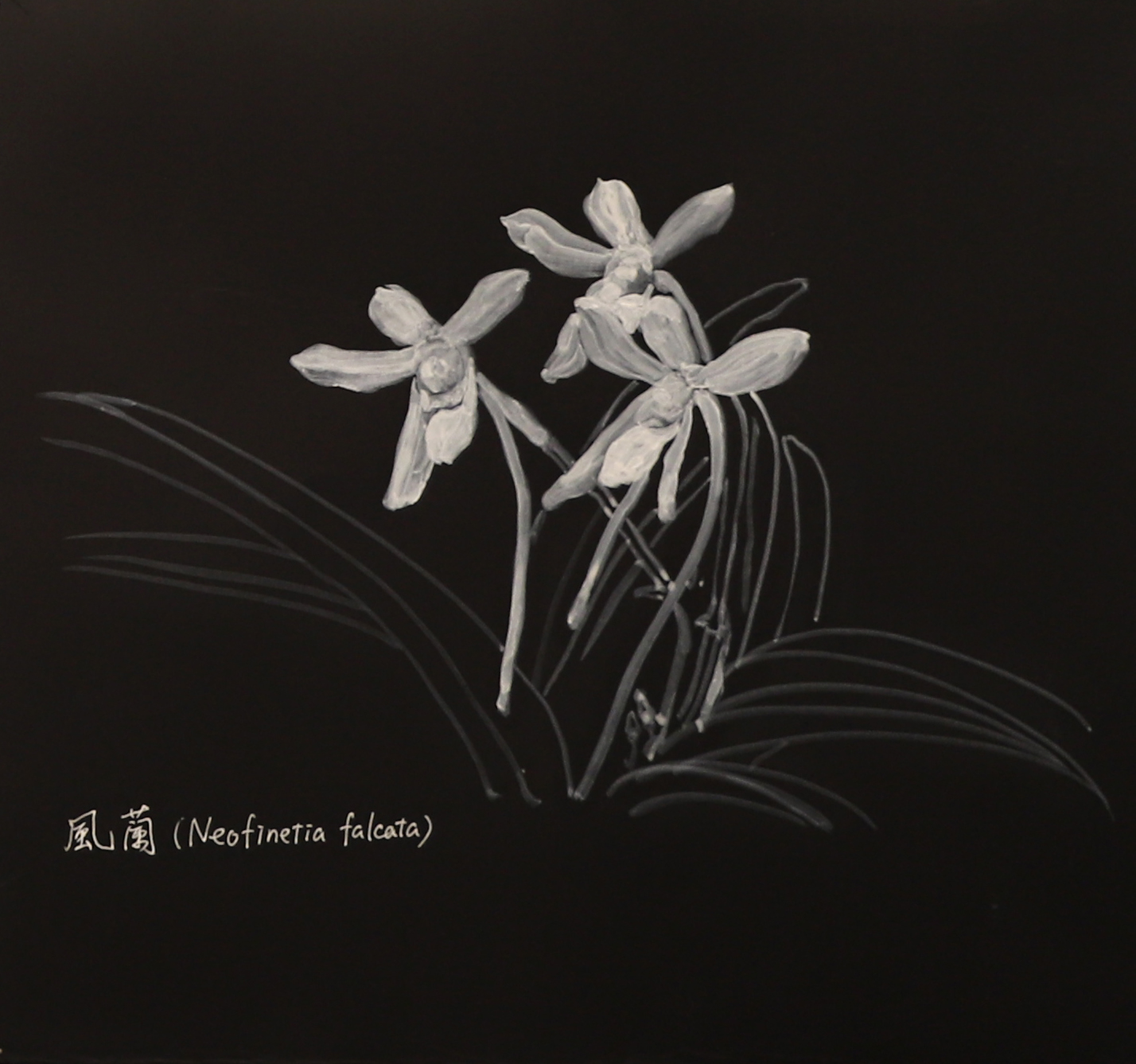 |
|
"Who is the intruder" Painting | Acrylic on black card | 40cm*38cm | 2018 |
Orchid plants are highly sensitive to the environment and can be described as a barometer of the environment. "The gentleman is gone" series depicts several rare plants in Ningbo, mainly orchids. Most of the plants were discovered by the project’s collaborator—— Lin Hailun, a well-known plant and insect research expert in Ningbo——during his outdoor inspections. Urbanization has led to the loss of the environment of native plants. To eliminate various invasive weeds, spraying herbicides has further threatened the survival of native plants. Meanwhile, because orchids have become more and more popular in the market in recent years, the phenomenon of digging for orchids is endless, pushing orchids to the edge of extinction. The artist presented orchids in black and white colors in the exhibition, expressing a mood of mourning, revealing that they are far away from the forest under the threat of urbanization and their impact on biodiversity, hoping to arouse action.
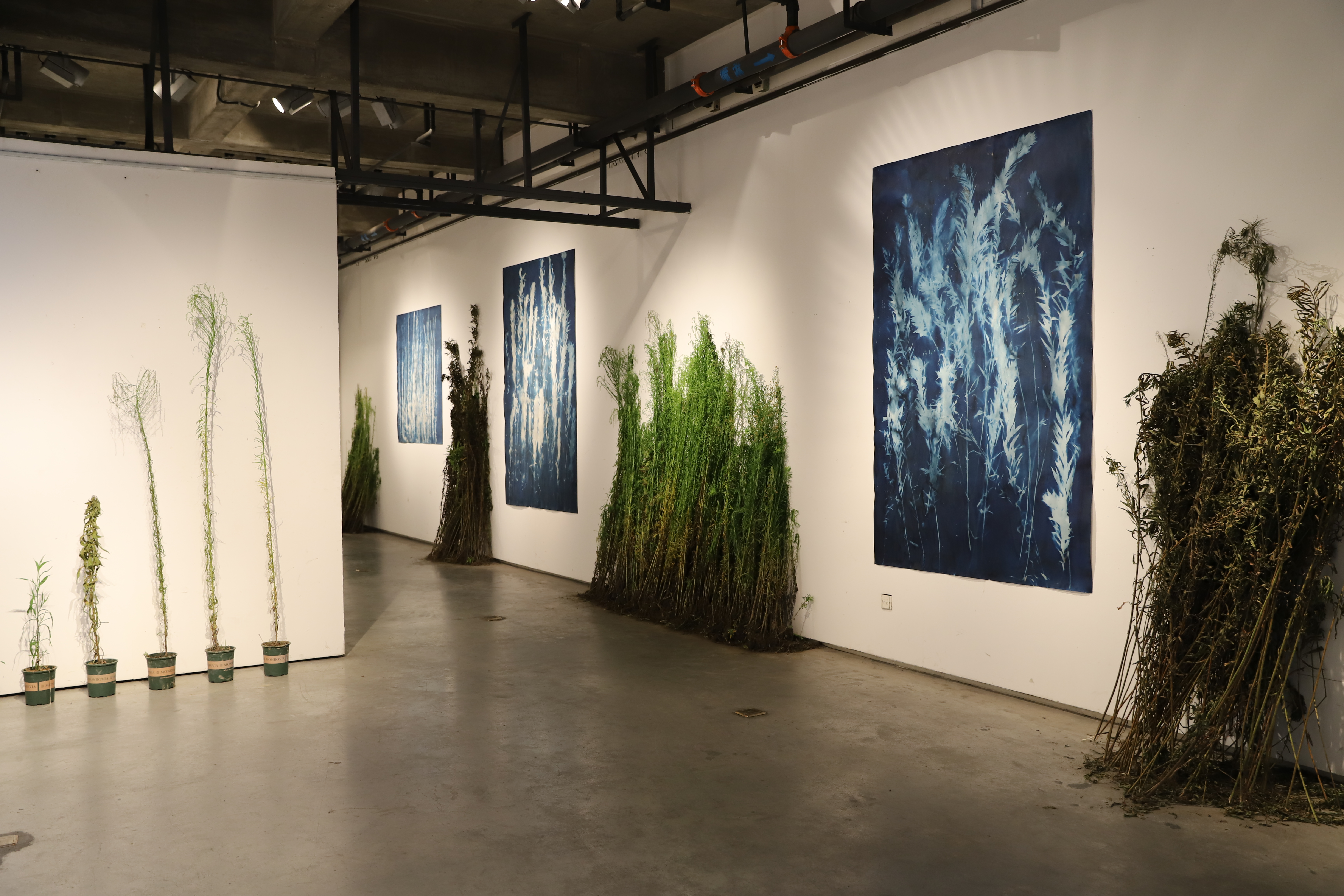 |
|
““Who is the intruder” Performance art, cyanotype, invasive plants, video | 2018 |
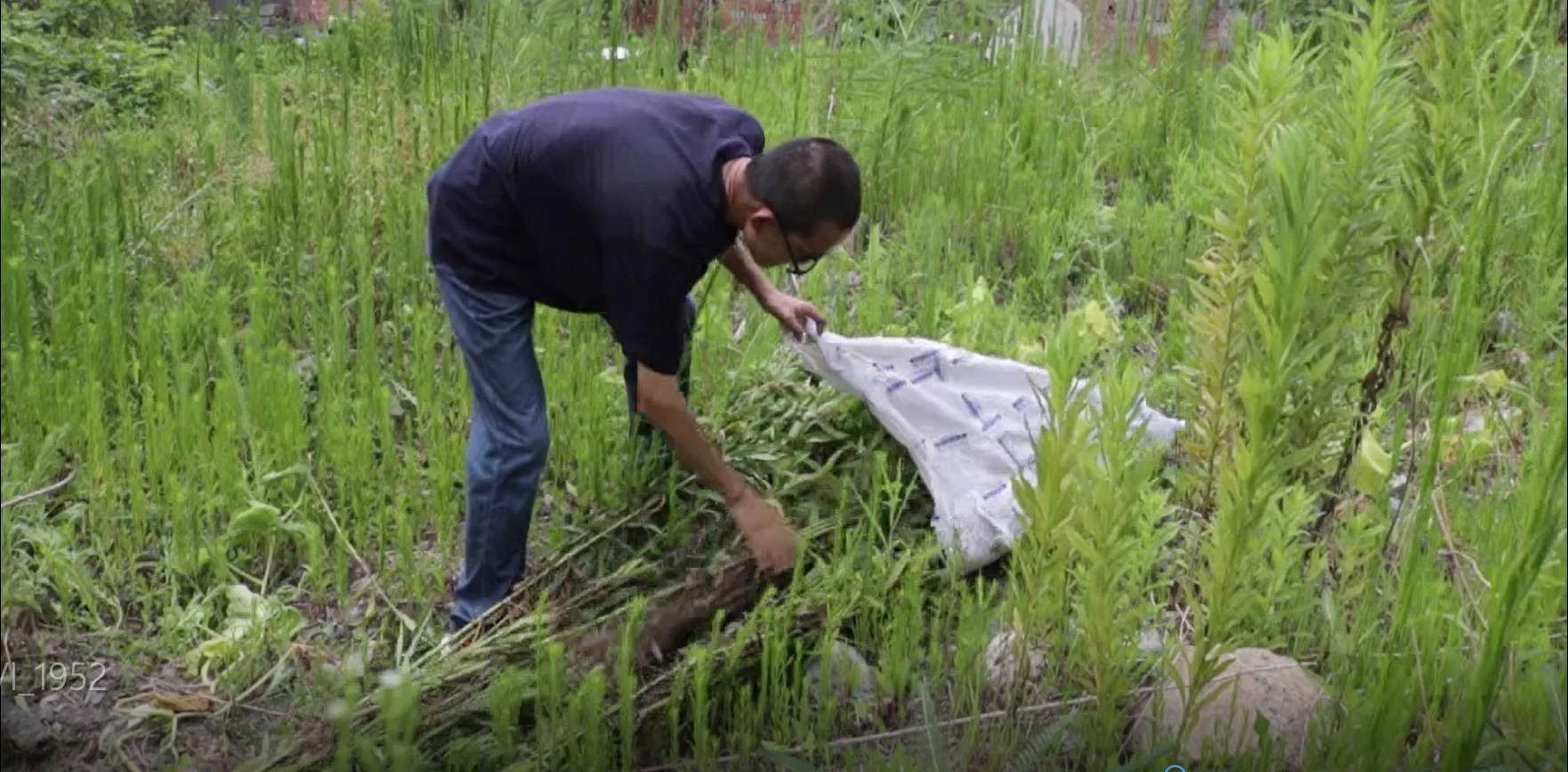 |
|
"Who is the intruder" The artist manually pulls out the plants. |
In a wasteland near the Ningbo Museum of Art, there were several invasive plants such as horseweed and Solidago Decurrens, but the native plants were hard to find. The artist interacted with the land physically, manually pulling out plants, and did not use commonly used herbicides to avoid continuing to harm the entire ecosystem. After that, the artist transported bunches of invasive plants back to the art museum and used the ancient photography technique————cyanotype printing————to record them. The artist shared information and opened up public discussions through physical works, exhibitions, cyanotype production, and workshops.
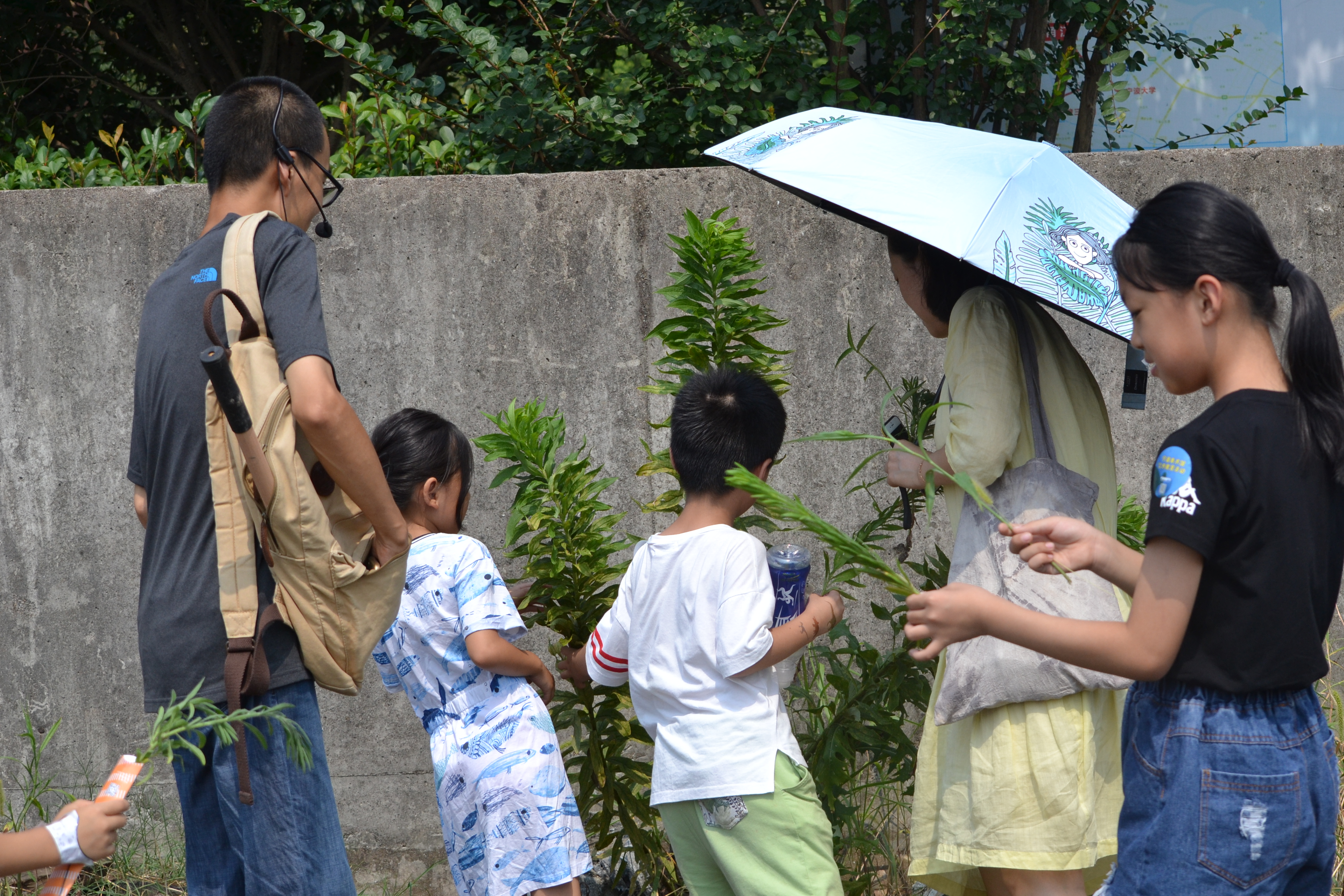 |
|
"Who is the intruder" "Invasive Plants Cyanotype Program" Children's Workshop |
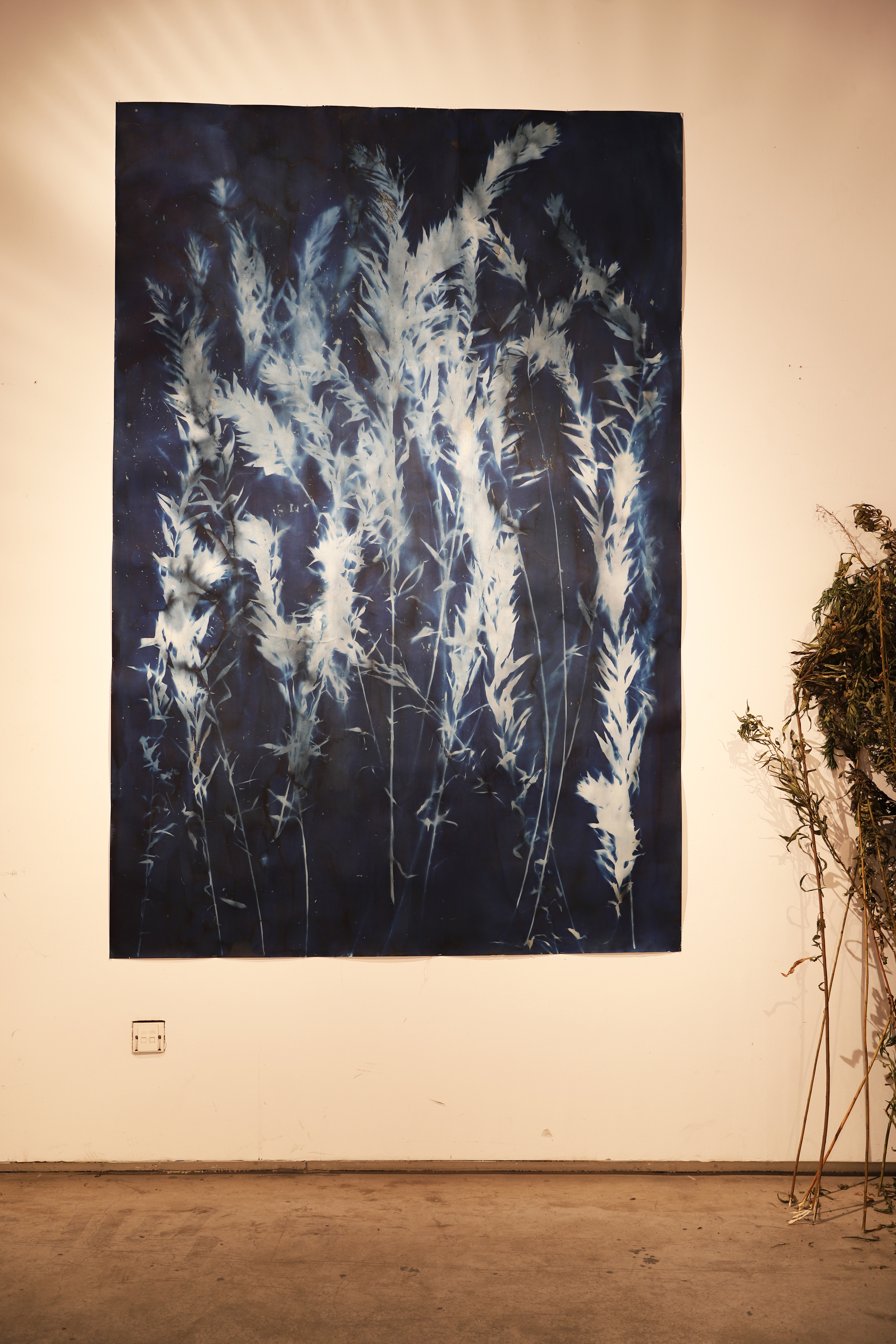 |
|
"Who is the intruder"
Cyanotype | 235 x 150cm | 2018 |
In this project, Jin Lipeng and his students spent more than half a month in Wangjiawan, Liuyin, Beibei District, Chongqing, and Tongshui Village for garbage collection and research. They carried out GPS positioning, photography, garbage removal, and conducted interviews and dialogues with rural garbage workers, transfer station cleaners, residents near garbage dumps, and government officers to understand the distribution and disposal status of Liuyin garbage and related livelihood issues.
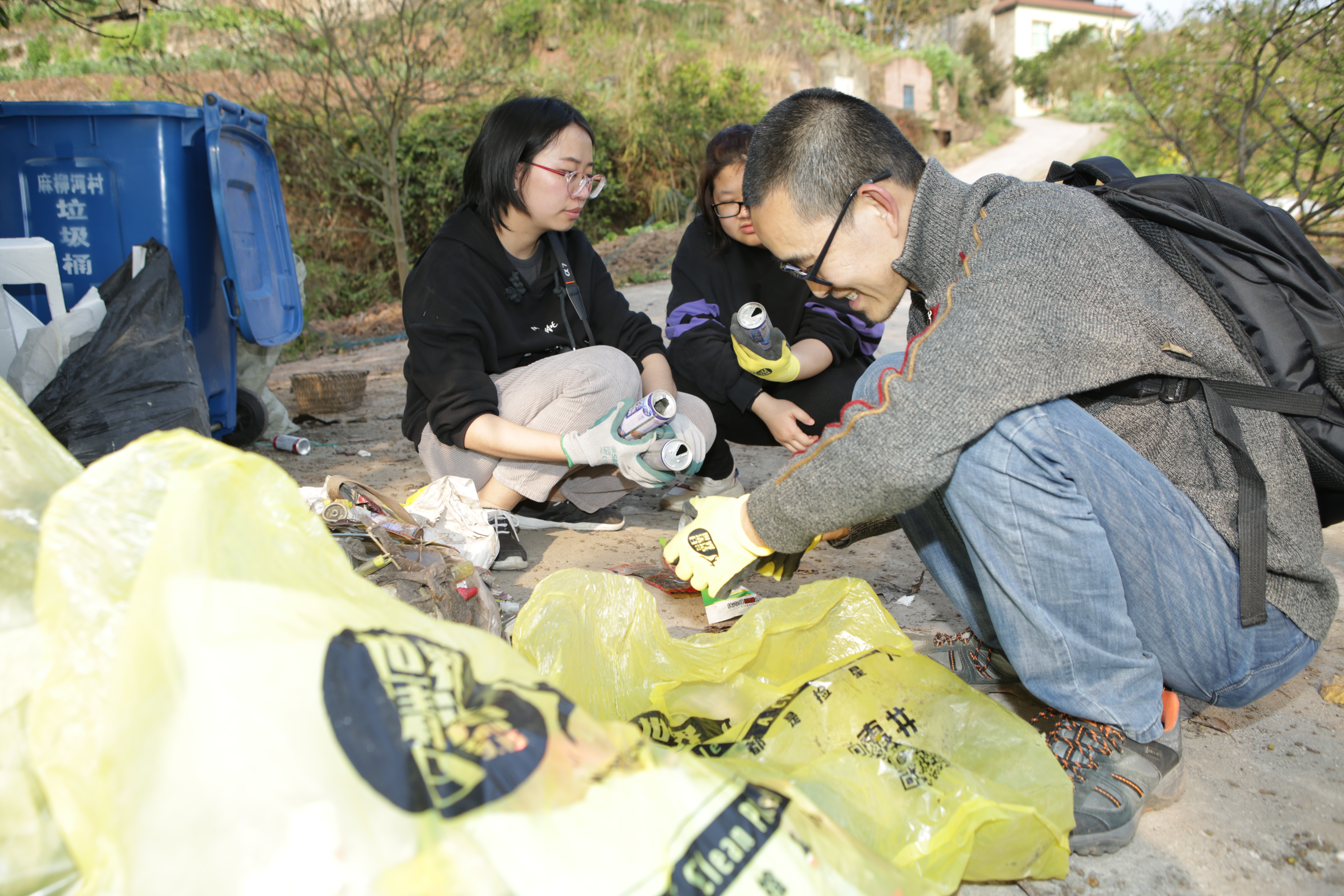 |
|
“Liuyin Garbage Research” Project team members: Jin Lipeng, Feng Fenjin, Chen Yuhan, Zhong Ni, Gu Xiaohuan, Zhou Wanrong, Chen Yanjun, Gong Yanlin, Liu Lijia, Jiang Qiu. |
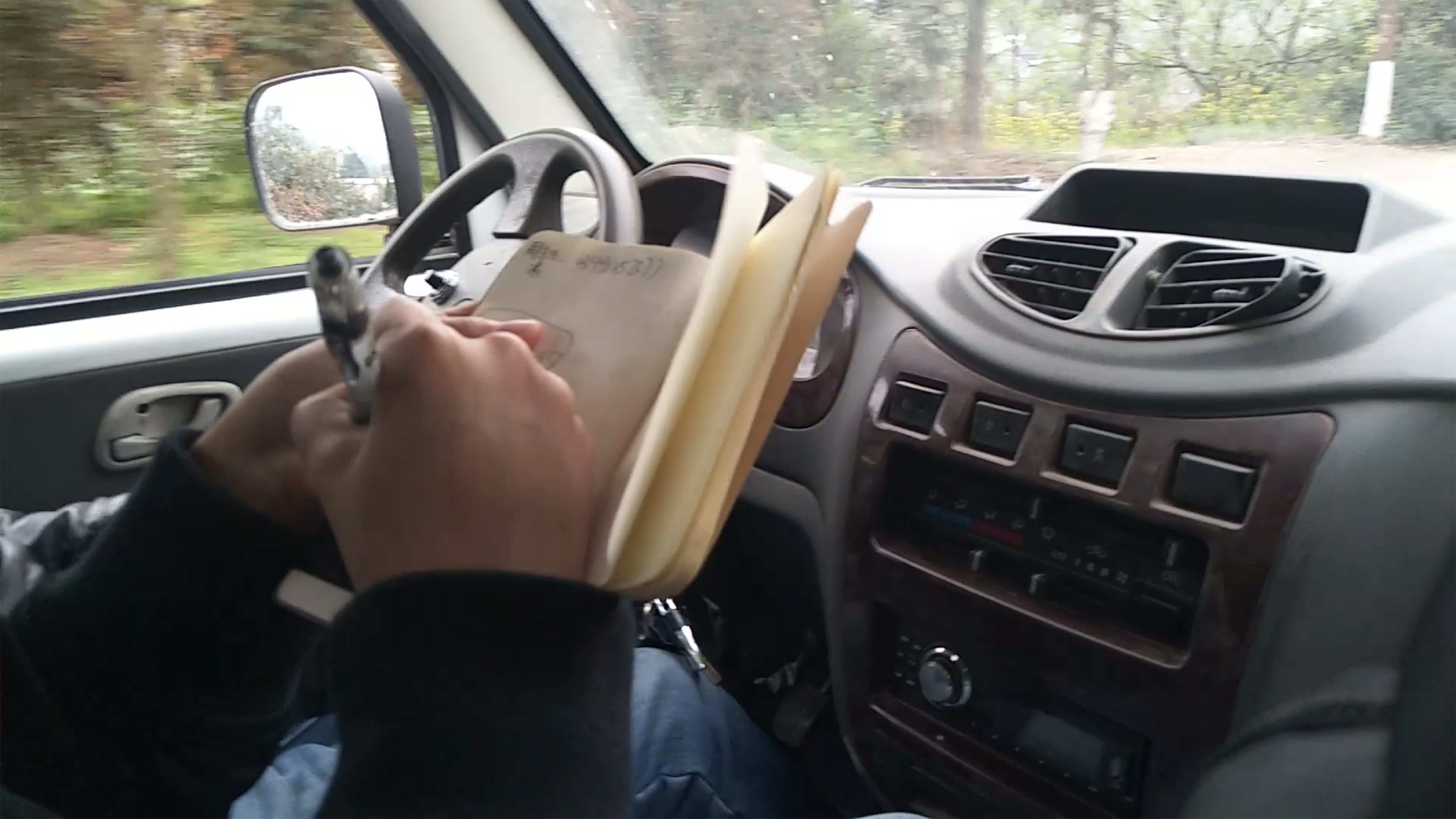 |
|
“Liuyin Garbage Research” |
Like the vast majority of urban and rural areas in China, Liuyin’s garbage disposal was still a mixed treatment system that does not distinguish between wet and dry waste. The garbage bins at the grassroots level were transported to the garbage transfer station for some preliminary sorting and compression and finally transported to a waste incineration plant for burning to generate electricity.
The project was presented on the ground in front of the town government compound. The project team members combined the pick-up route, photos, and real objects to make a garbage map. After considering factors such as weather and durability, the map is made of plastic. The members discussed the issues of random disposal of rural garbage, garbage classification, plastics, composting, and pesticides with the public at the exhibition.
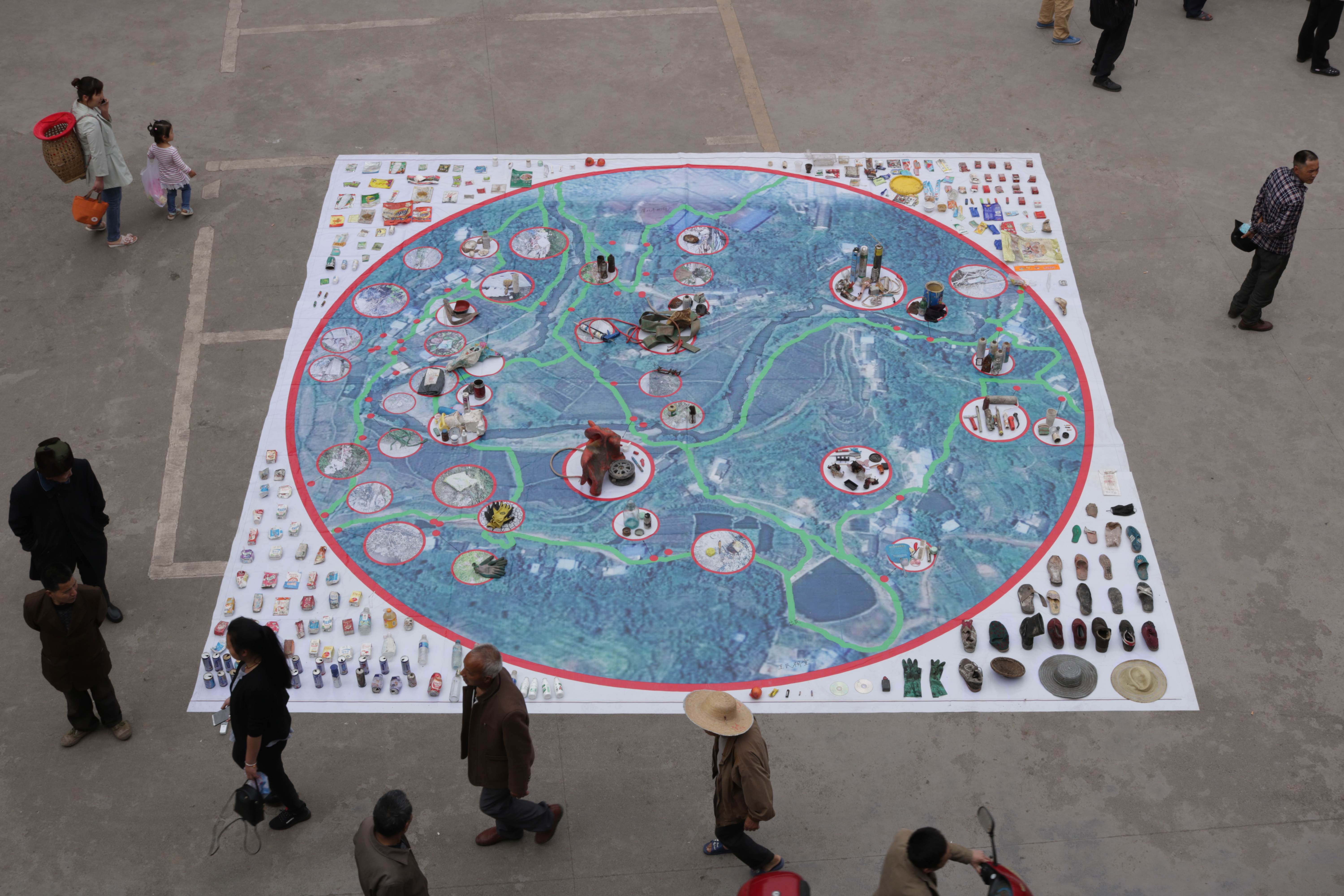 |
|
“"Liuyin Garbage Research" Installation | Inkjet maps, objects, speakers | 6 x 6 m | 2018 |
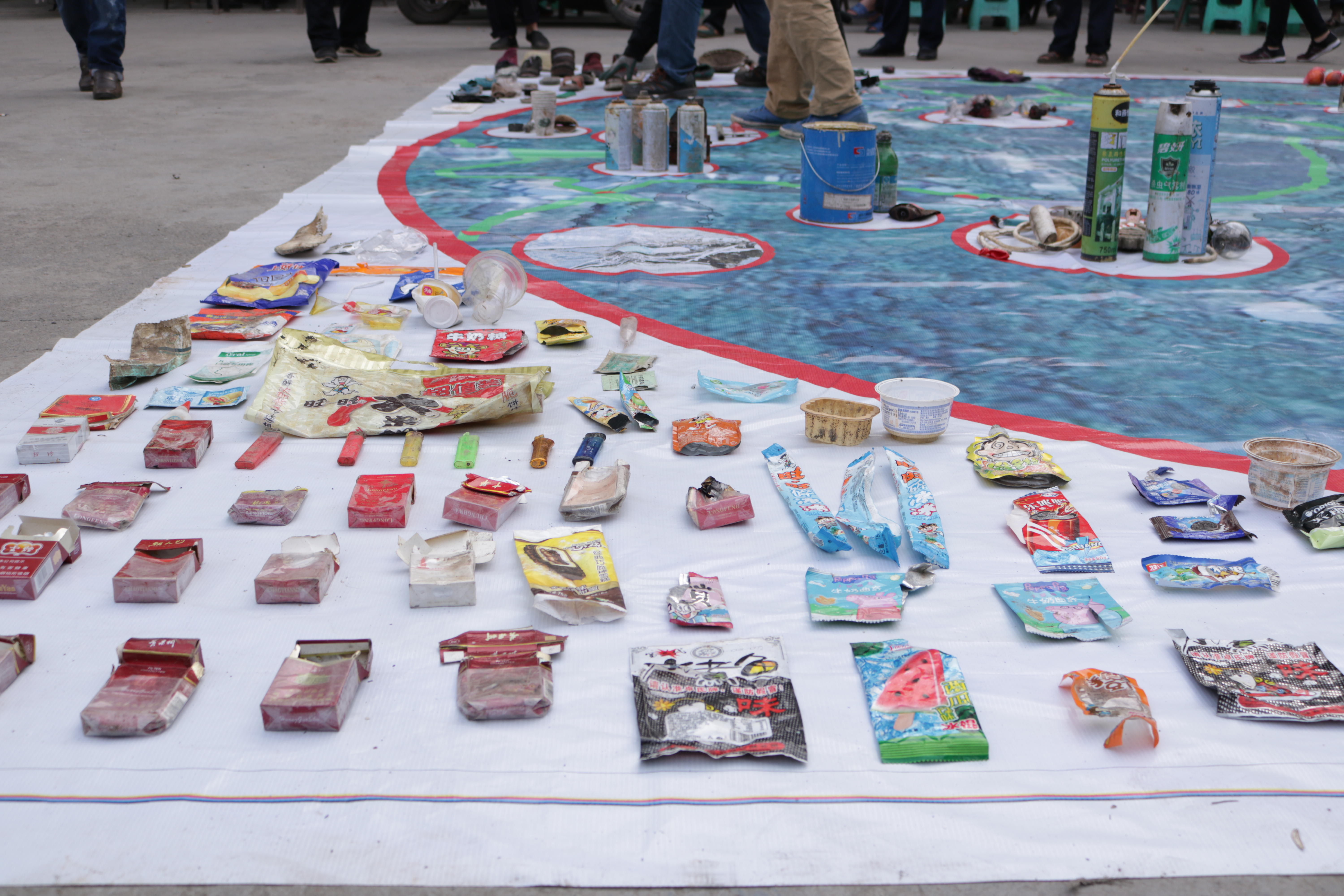 |
|
"Liuyin Garbage Research" Installation | Inkjet maps, objects, speakers | 6 x 6 m | 2018 |
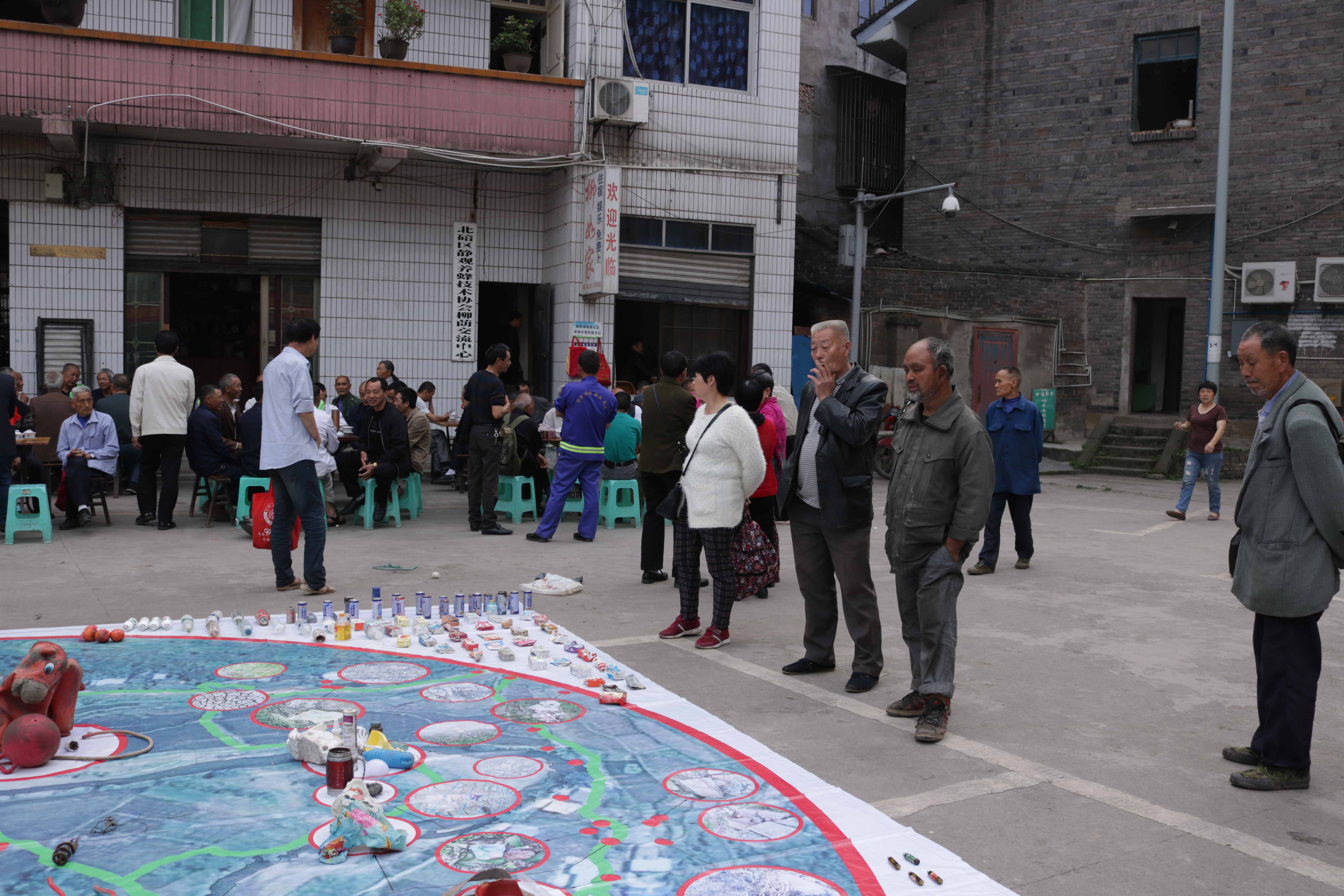 |
|
"Liuyin Garbage Research" |
“Healing Garden Project” is a restoration-type ecological art project. It has transformed a construction waste dump in Sichuan Fine Arts Institute into a community food garden. It aims to heal people and nature through ecological food production, gardening, and garbage conversion, and to explore how to create future-oriented survival and action aesthetics to deal with crises and to make a change to society. At the same time, it plans to cooperate with students, other teachers, and family members, and the grassroots communities in the form of university courses, community workshops, book clubs, screenings, food sharing, and seed exchanges to gather and build communities. The Chinese pronunciation of Healing Garden is "Yu Yuan", which is homophonic with a kind of Chinese dessert “taro ball”, which is a metaphor for its food production function. By using the food produced on the repaired land to heal the body that has been harmed by chemical agriculture.
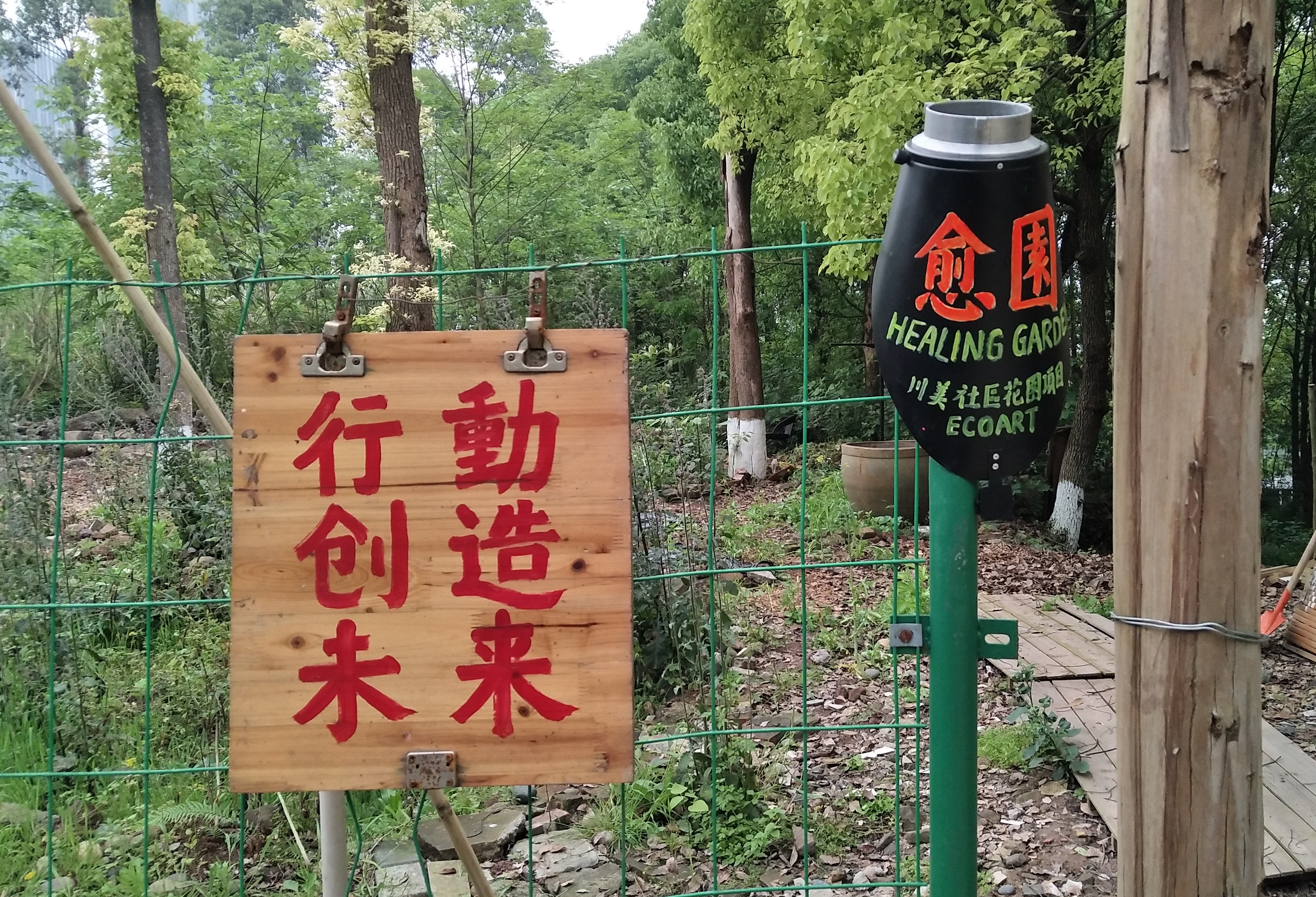 |
|
"Healing Garden" used to be a severely disturbed land. It has been healed ecologically by the removal of chemical waste, and planting to remove toxins and absorb carbon dioxide. |
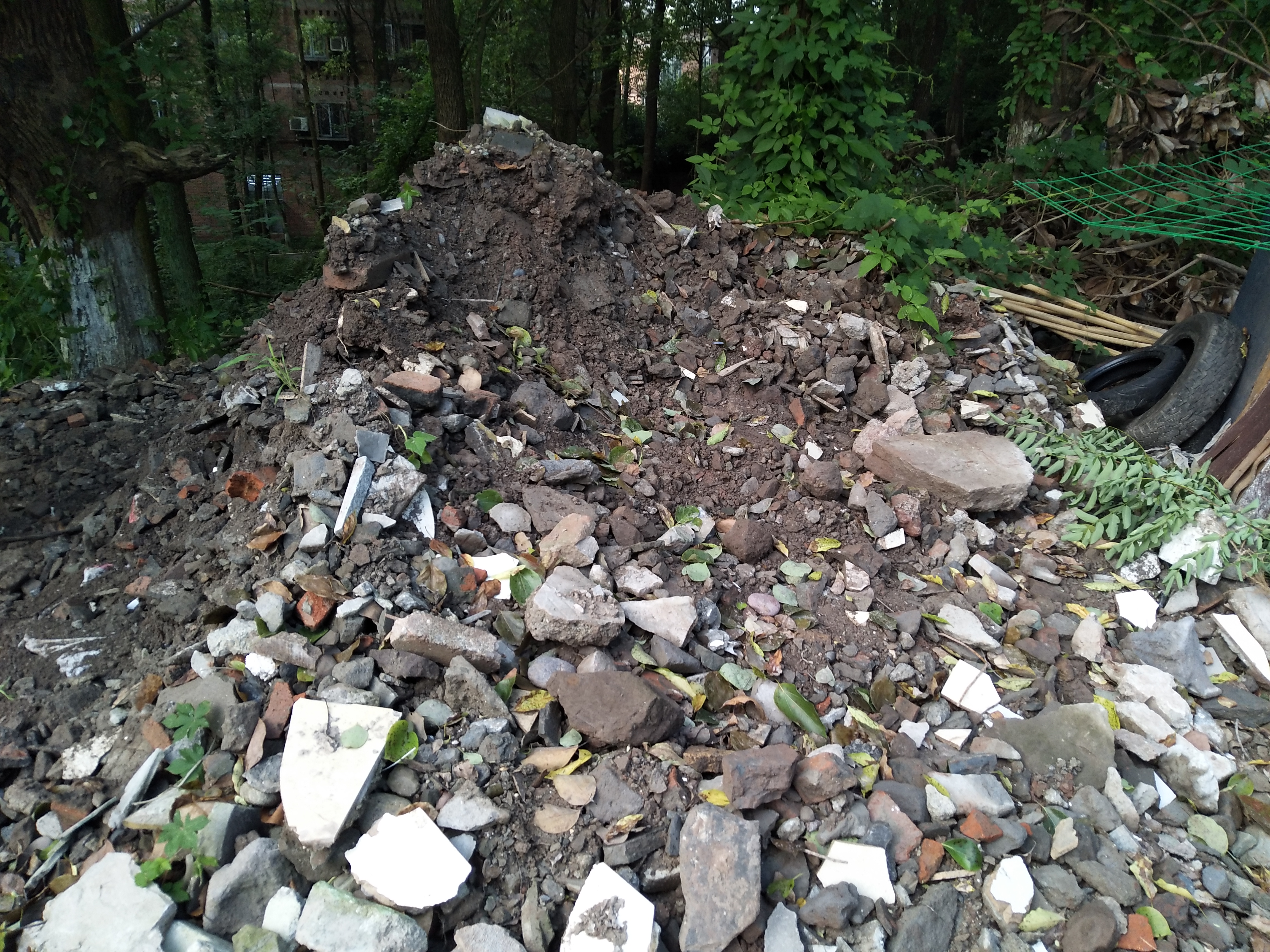 |
|
The land before the "Healing Garden" was cleaned. |
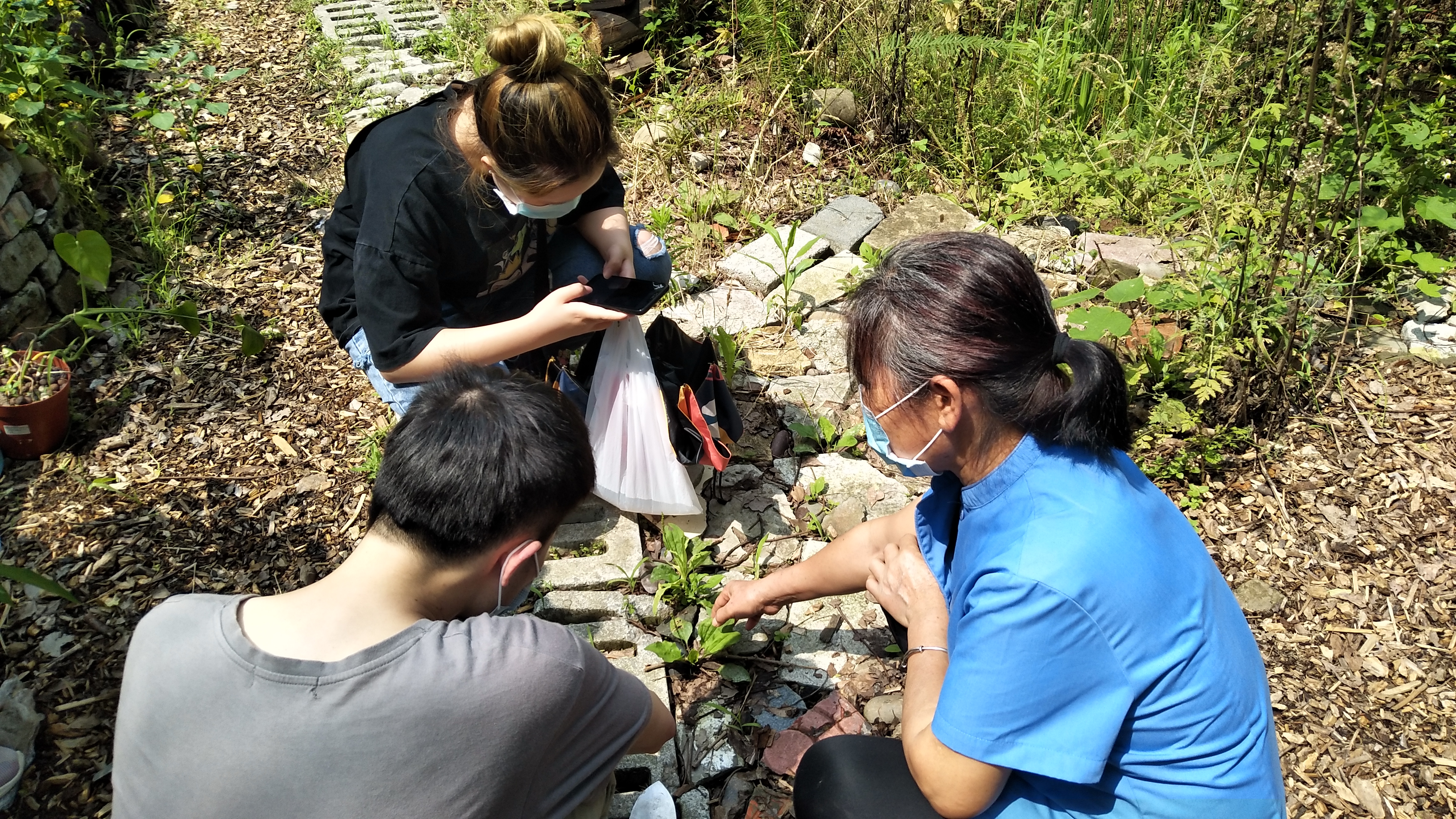 |
|
"Healing Garden" encourages native biodiversity to heal native species that have disappeared due to urbanization and the construction of university towns, saves the diversity of seeds, and respects the existence of native plants as local knowledge. “Healing Garden” challenges the modern landscape with symbiotic aesthetics, coexists with weeds, feeding birds, praising agriculture and seeds, and providing ecological corridors and island hopping for various animals. This picture shows a main participant of "Healing Garden", a cleaning auntie, instructing students to learn about local wild vegetables and medicinal plants. |
 |
|
"Healing Garden" has been gradually repaired according to the principle of being small and slow, re-examined the material with the spirit of cherishing material, and strived to make the best use of the material. In here, the "problem substances" of the "Anthropocene"–––plastics and chemical wastes–––were recorded and removed, concrete sewer covers were used as walkways, bricks were used to construct the curves of the planting area, and huge stones were used to build the “Monument to the Good Anthropocene” (the giant spiral garden), the kitchen waste of the community was transformed into soil that nourishes everything, abandoned picture frames and wooden boards were transformed into signs or writing works, and the trash that was abandoned after various artistic creations became ready-made installations decorated in the garden. |
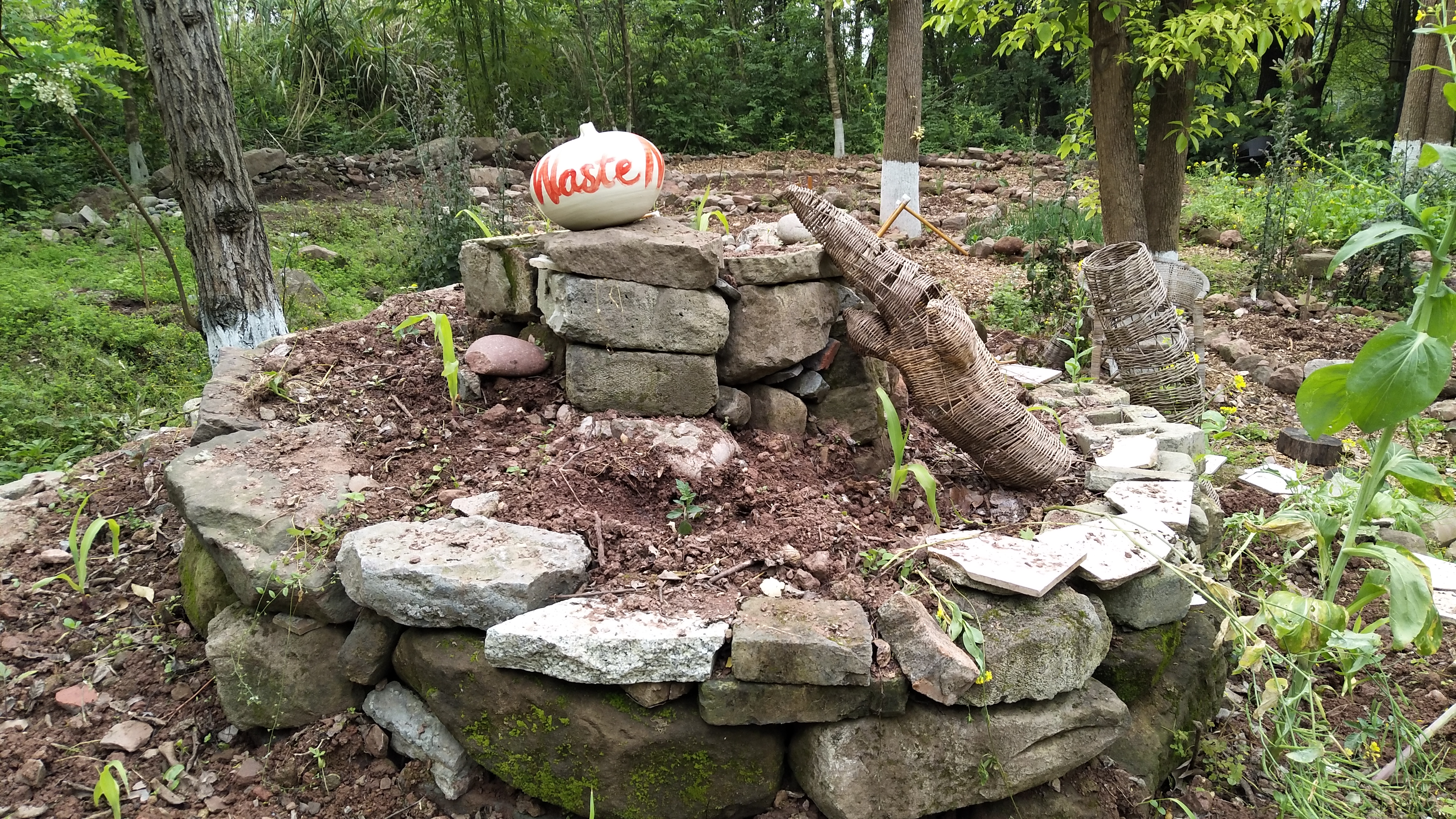 |
|
The "Monument to the Good Anthropocene" used abandoned large stones, concrete, bricks, and other construction waste to build the framework of the spiral garden, thereby creatively transforming concrete, an important material for modernization and environmental crises. Plants were placed in high and low, sunny and shady positions in the spiral garden according to their characteristics (rooting depth, sun/shade, dry/wet) so that the plants can receive the most suitable sunlight and rain. By planting a variety of ornamental plants, herbs, and vegetables, without using any chemical fertilizers and herbicides, nature’s own power is used to repair the soil, to transform construction waste and the negative concept of "Anthropocene". It shows that human beings can live in harmony with all things. |
Image and video courtesy of the artist. All rights reserved.